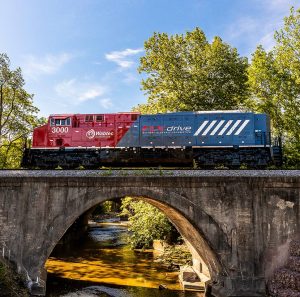 Wabtec and General Motors will collaborate to develop and commercialise GM’s Ultium battery technology and Hydrotec hydrogen fuel cell systems for Wabtec locomotives.
Wabtec and General Motors will collaborate to develop and commercialise GM’s Ultium battery technology and Hydrotec hydrogen fuel cell systems for Wabtec locomotives.
“The rail industry is on the cusp of a sustainable transformation with the introduction of batteries and hydrogen to power locomotive fleets,” Rafael Santana, CEO and president of Wabtec said.
The two companies signed a nonbinding Memorandum of Understanding to advance their shared vision of a zero-emissions future in transport. Under the agreement, Wabtec will bring its expertise in energy management and systems optimisation to develop a solution for heavy haul locomotives that takes full advantage of GM’s advanced technologies.
GM’s Ultium battery technology is anticipated to provide the flexibility, efficiency, power, and reliability needed for rail. Ultium Cells LLC, GM’s joint venture with LG Energy Solution, is currently constructing battery cell plants in Ohio and Tennessee.
Rail networks are critical to transportation and to GM’s ability to serve our customers across North America, and Wabtec’s bold plan to de-carbonise heavy haul and other locomotive applications helps advance our vision of a world with zero crashes, zero emissions and zero congestion,” Mark Reuss, the president of GM said.
The Hydrotec hydrogen fuel cell power cubes are compact and easy to package and can be used in a wide range of applications, including locomotives. The fuel cell systems will be assembled from globally sourced parts by Fuel Cell Systems Manufacturing, LLC in Brownstown, Michigan, the manufacturing joint venture between General Motors and Honda.
Wabtec FLXdrive locomotive is the world’s first 100 per cent battery – powered locomotive which is capable of reducing carbon emissions by up to 30 per cent when operating at 6 MWh. “We can’t stop there. By working with GM on Ultium battery and Hydrotec hydrogen fuel cell technologies, we can accelerate the rail industry’s path to decarbonisation and pathway to zero-emission locomotives by leveraging these two important propulsion technologies,” Santana explained.
Share on:



